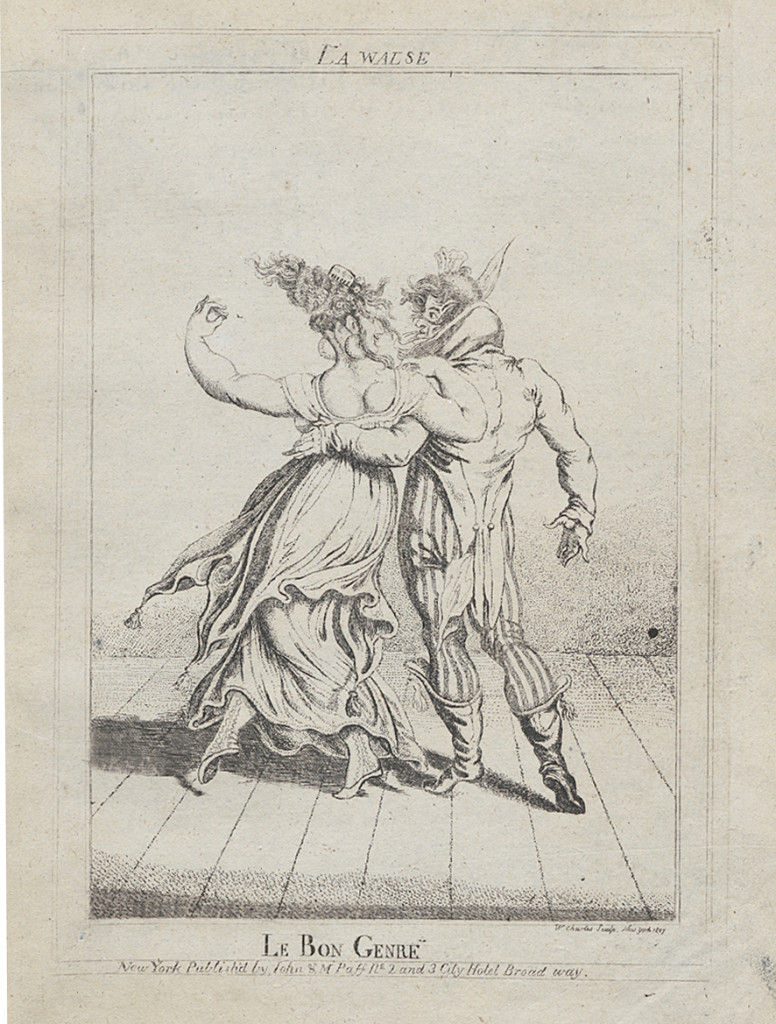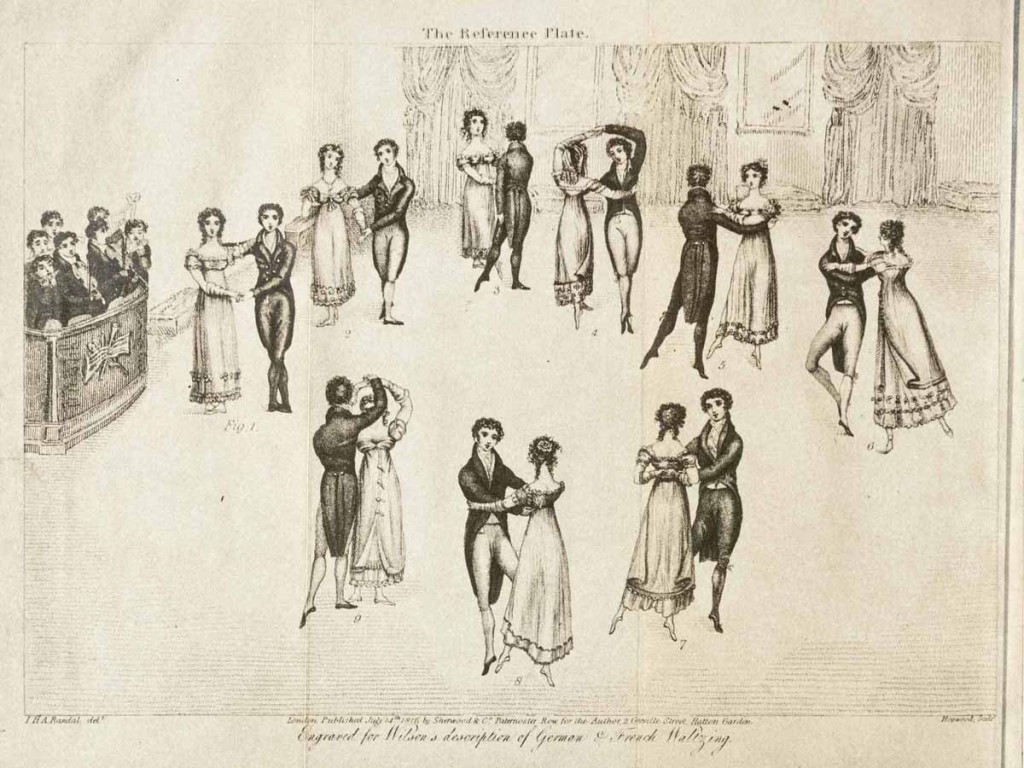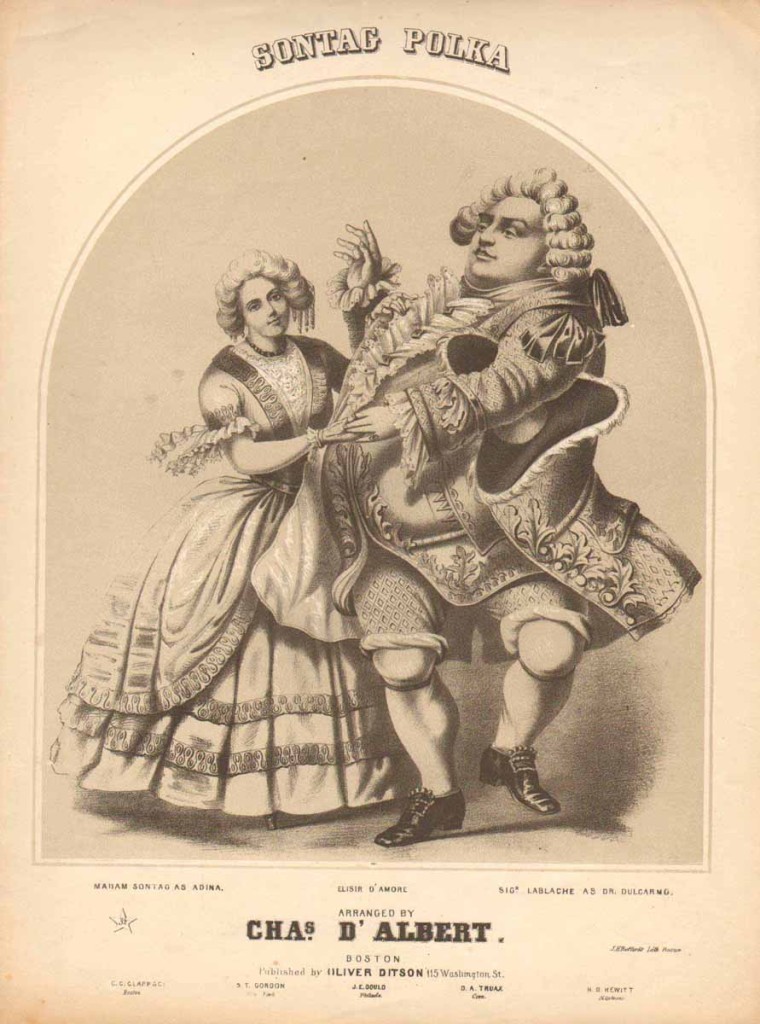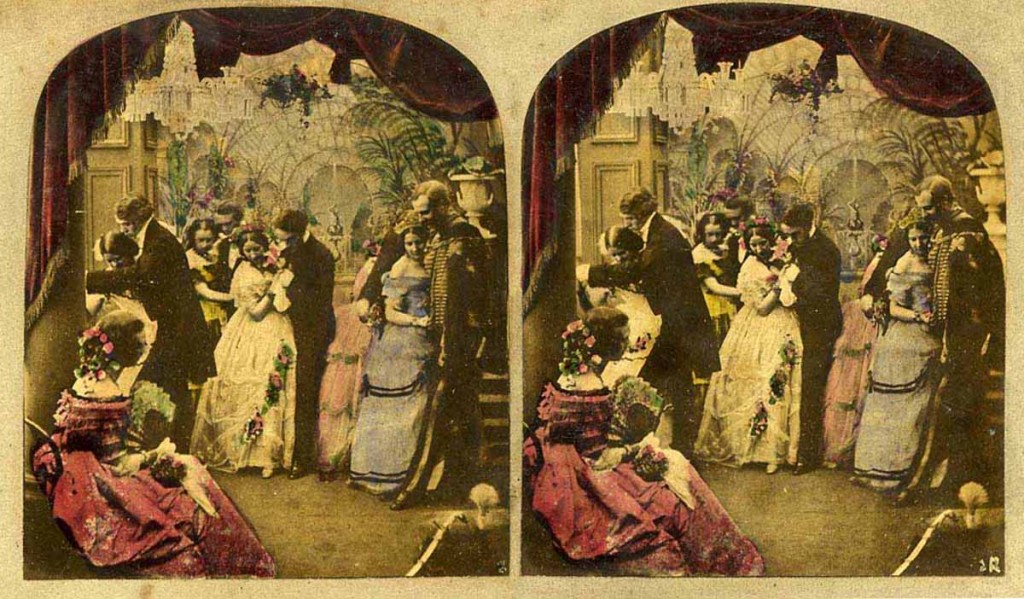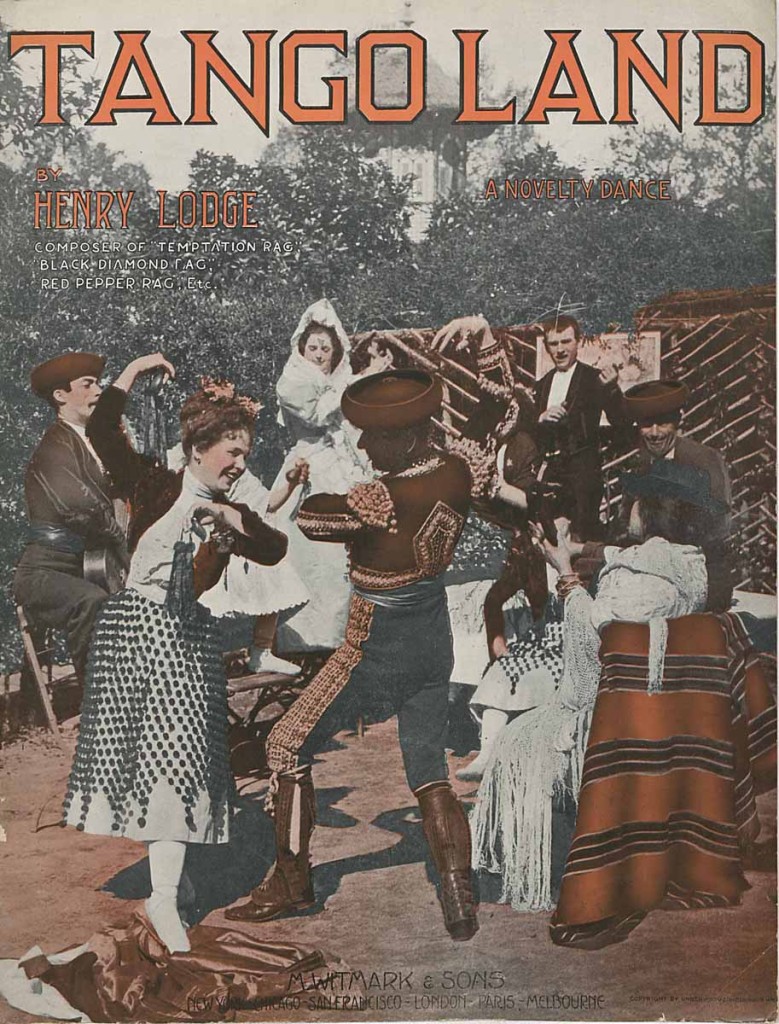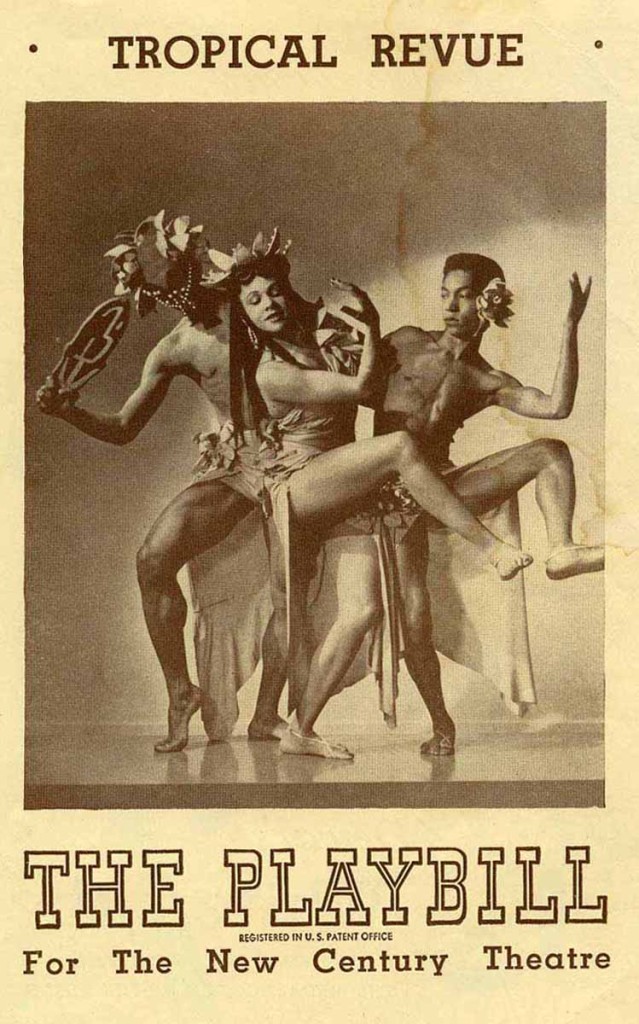Romance of the Dance
In the 1800s, often called the Age of Romanticism, people placed greater importance on feeling and sentiment rather than the scientific principles of the Enlightenment. Couples now held each other closely as they whirled and glided across the floor in what were known as round dances. The elegant waltz, initially considered scandalous, epitomized the shift from rationality to romance. Nearly 100 years later, the passionate tango shocked the world and led the way for Latin, Caribbean, and African rhythms to be introduced into popular dances.
La Walse
Etched by William Charles
New York, New York: J. & M. Paff, 1807
Ink on laid paper
1971.280 Museum purchase
Based on a French print from a series satirizing middle class life, this sheet music cover shows a couple with arms intertwined closely touching, then considered indecent and vulgar. The waltz, from a word meaning to roll or glide, was just being spread from Germany or Austria, where it was a livelier dance, to France and then onto other parts of the world.
A Description of the Correct Method of Waltzing (title page at left)
Thomas Wilson
London, England: Sherwood, Neely, and Jones, 1816
GV1761 W75 Printed Book and Periodical Collection, Winterthur Library
English dancing master Thomas Wilson published the first waltz manual in 1816 to profit from the craze. He attacked the popular notion of waltzing “as an enemy of true morals, and as endangering virtue” merely because of the dance’s foreign origins. Wilson’s couples display the various positions of the dance in a much more restrained manner than seen in the earlier caricature, possibly helping the public to accept the waltz. With its basic steps, the waltz was easy to learn and enjoy.
Sontag Polka
Lithographed by J. H. Bufford
Boston, Massachusetts: Oliver Ditson, 1844-57
69×3.6 Joseph Downs Collection of Manuscripts and Printed Ephemera, Winterthur Library
The polka, one of the best-known folk dances, originated in Prague (in the present-day Czech Republic) in the 1830s and was refined by the French in the 1840s. Combining the closed hold of a waltz with the energy of a jig, the simple polka with its jaunty music quickly became the second-most popular round dance after the waltz.
The Drawing-Room Dances
Henri Cellarius
New York, New York: Dinsmore & Co., 1858
GV1751 C39 Printed Book and Periodical Collection, Winterthur Library
Parisian dancing master Cellarius authored several manuals. In this one, the illustration shows the graceful Varsovienne which originated in Poland around 1850 and quickly made its way to America. The dance combined movements from the mazurka, a traditional Polish dance, with the waltz.
Couples dancing
United States; about 1860-70
Hand-colored stereopticon
75×81.87 Joseph Downs Collection of Manuscripts and Printed Ephemera, Winterthur Library
These dancers may not be gazing deeply into each other’s eyes, but they are very tightly locked in closed holds. When choosing a partner for this dance, a woman carefully weighed which men were worthy of such an intimate embrace.
Tango Land
New York, New York: M. Witmark & Sons, 1912
RW75 Winterthur Archives, Winterthur Library
The tango, a sensual Argentinean dance, was the first Latin rhythm dance to gain worldwide acceptance. International dancing sensations Irene and Vernon Castle were instrumental in familiarizing American audiences with it in the 1910s.
Playbill for “Tropical Revue”
New York, New York: Playbill Inc., 1944
91×46 Joseph Downs Collection of Manuscripts and Printed Ephemera, Winterthur Library
Theater-goers at the 1944-45 performance of “Tropical Revue” were enchanted by numbers choreographed by the famous dance educator Katherine Dunham at the height of her career. An innovator in theatrical dance, she incorporated a variety of dances from other countries in this production, among them a rumba, Moorish bolero, Creole Mazurka, choro (a 19th century Brazilian quadrille), and majumba (love dance of ancient Africa).
View pages from the program for “Tropical Revue.”


